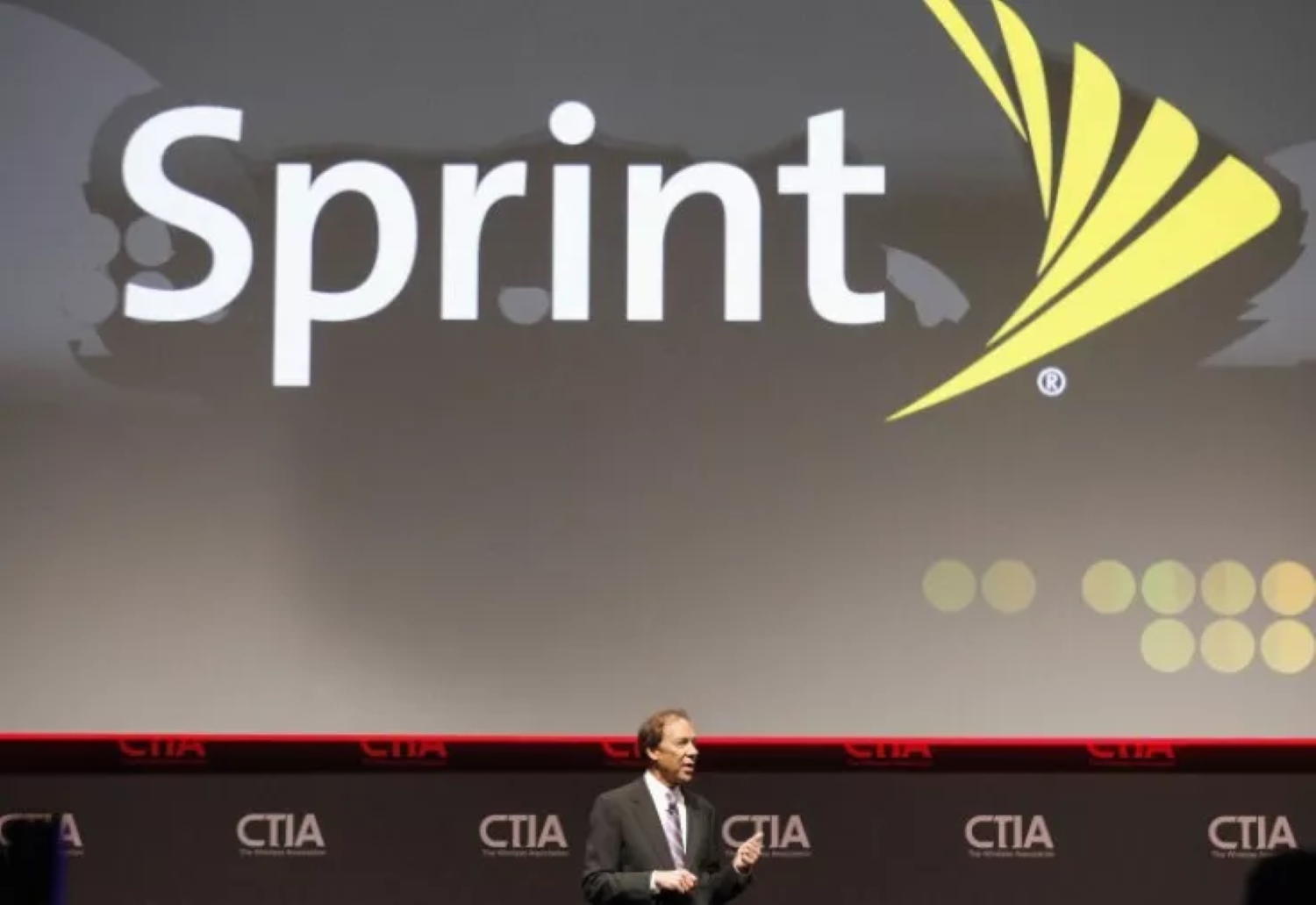The End of Sprint and the Birth of a Wireless Powerhouse
Sprint Corporation, once a prominent name in the American telecommunications landscape, holds a storied history that spans over a century.
From its humble beginnings as the Brown Telephone Company in the late 19th century to its pivotal role in shaping the mobile communications industry, Sprint was a company that left an indelible mark on the way we connect and communicate.
However, as of 2020, the Sprint brand no longer exists as an independent entity. Instead, it lives on as part of the larger T-Mobile US network, following a merger that reshaped the telecommunications landscape.
Supreme Monopoly: Leaning Hard on Acquisitions and Mergers
Sprint Corporation’s history is a fascinating journey that can be traced back to the 1800s, pre-dating Alexander Graham Bell’s patent for the telephone itself.
It all began as a part of the Southern Pacific Railroad’s telecommunications network, which aimed to facilitate train dispatches. The company responsible for this network was the Southern Pacific Communications Company (SPCC), established in January 1970.
In the mid-1970s, SPCC underwent a transformation that led to the adoption of a new name: Sprint. The winning entry of a naming contest resulted in “Sprint,” an acronym for “Southern Pacific Railroad Internal Networking Telephony.”
The name “Sprint,” accurately represented the company’s beginnings, showcasing its transition from utilizing telegraph lines for railroad communication to becoming a telecommunications provider offering telephone services.
Sprint’s journey continued as it consolidated several telecommunications companies. The Brown Telephone Company, founded in 1899 by Cleyson Leroy Brown in Abilene, Kansas, played a pivotal role in Sprint’s development.
Brown established the telco as an alternative to the Bell Telephone Company, and over time, it became known as the United Telephone Company. Subsequent consolidations led to the company’s renaming as “United Utilities” and “United Telecommunications.”
Throughout the 20th century, Sprint expanded its services, becoming a significant player in both wireline and wireless telecommunications. In 1992, Sprint ventured into the wireless business with the acquisition of Centel, becoming one of the few providers to offer wireless, long-distance, and local calling services.
However, the 2004 merger with Nextel marked a turning point in Sprint’s history. The ambitious merger aimed to expand Sprint’s wireless customer base and enhance its competitiveness against industry giants like Verizon and AT&T. Unfortunately, the merger faced several challenges, including incompatible technologies between Sprint and Nextel, leading to customer attrition and operational difficulties.

The Nextel merger’s shortcomings had a profound impact on Sprint’s financial health, leaving the company with a depleted balance sheet and limited resources for network improvements compared to its competitors. Additionally, Sprint made an unconventional choice in the 4G technology landscape, opting for WiMax while others embraced the more successful LTE standard.
Challenges in the Sprint and Nextel Merger: A Closer Look
Delving deeper into the intricacies of the Sprint and Nextel merger reveals a web of challenges that plagued this corporate fusion.
The collision of divergent technologies, with Sprint’s reliance on CDMA and Nextel’s proprietary iDEN, not only hampered the integration process but also led to compatibility issues, resulting in customer dissatisfaction and a diluted quality of service.
Furthermore, the corporate cultures of Sprint and Nextel stood as polar opposites. Sprint, characterized by its conservative and risk-averse approach, clashed with Nextel’s reputation for embracing innovation and taking calculated risks. This cultural incongruence seeped into management practices, creating a maze of challenges that exacerbated the already complex integration.
The initial branding strategy, where Sprint’s name was prominently featured, created perplexity among subscribers uncertain about the fate of their services. In response to customer confusion and dissatisfaction, Sprint Nextel had to revise its branding approach, placing more emphasis on the Nextel brand, though not without incurring additional expenses.
Legal and regulatory hurdles further complicated matters. Issues like spectrum interference and adherence to FCC conditions diverted the company’s focus and drained resources, making the integration process more intricate and costly.
Strategic missteps in the form of a price war to attract new subscribers inadvertently led to a backlash. Existing customers, enticed by cheaper plans, switched to lower-cost alternatives, eroding the company’s profitability and even prompting a credit rating downgrade.
Leadership turbulence, marked by the resignation of the Chief Operating Officer and the exit of the executive chairman, created uncertainty about the company’s strategic direction and stability. These departures were often attributed to the challenges of retaining customers with higher creditworthiness.
The transition of spectrum to address interference issues resulted in the degradation of network performance in certain regions. Customers experienced service disruptions, undermining their confidence in Sprint Nextel’s ability to provide consistent, high-quality mobile services.
In the fiercely competitive telecommunications landscape, Sprint Nextel found itself entangled in this complex web of multifaceted challenges, making it difficult to establish a strong foothold in the market.
The Tables Have Turns: Long Distance Giant Dropped the Lead
The years leading up to 2013 were undeniably challenging for Sprint. Despite being a prominent player in the telecommunications industry, it found itself trailing behind the long-established leaders, Verizon Wireless and AT&T Mobility, while also facing fierce competition from the ascendant T-Mobile USA, which was swiftly closing in on its fourth-place position.
However, Sprint’s fortunes were about to take a potentially transformative turn in July 2013. In a dramatic turn of events, a heated bidding war unfolded between two major players: Japanese telecom giant SoftBank and satellite TV firm DISH Network, both vying for control of Sprint Nextel.
Ultimately, SoftBank emerged victorious, striking a monumental deal to acquire 78% of Sprint Nextel for a staggering $21.6 billion. This significant transaction led to the rebranding of the company as “Sprint Corp.”
With SoftBank at the helm, there were ambitious plans to rejuvenate Sprint’s position in the market.

One of the boldest moves was an attempt to merge Sprint with T-Mobile. In June 2014, SoftBank unveiled a monumental $32 billion offer ($40 per share) for T-Mobile US. This proposal aimed to create a combined entity in which T-Mobile’s parent company, Deutsche Telekom, would retain a substantial 15-20% stake.
However, the merger faced strong opposition from U.S. regulatory authorities and was eventually abandoned by SoftBank due to this hostile reception.
Despite Sprint maintaining a robust spectrum portfolio that included 800MHz (formerly iDEN), 1900MHz (PCS), and 2500MHz (formerly WiMAX) frequencies, it continued to cede ground to its competitor, T-Mobile, which was experiencing a renaissance under the dynamic leadership of John Legere.
Merger discussions resurfaced, but this time, the roles were reversed, with T-Mobile taking the lead. In April 2018, Sprint and T-Mobile US announced a definitive agreement to merge, creating a new entity through an all-stock transaction. The proposed structure envisioned T-Mobile’s parent company, Deutsche Telekom, holding a controlling 41.7% stake, while SoftBank would possess 27.4%, and the remaining 30.9% would be in free float.
The merger proposal was met with its fair share of controversy, but this time, T-Mobile navigated it to fruition. In December 2018, the merger received approvals from critical entities such as the United States Committee on Foreign Investment, the Department of Homeland Security, and the Department of Defense.
Subsequently, in July 2019, the Department of Justice issued its own approval, contingent on certain conditions. As part of these conditions, the parties agreed to divest Sprint’s pre-paid businesses and 800MHz spectrum assets to DISH Network, paving the way for the merger to progress.
The T-Mobile and Sprint Merger: A Transformative Telecom Union and Customer Implications
The merger between T-Mobile and Sprint marked a significant turning point in the history of both companies.
In April 2020, T-Mobile successfully closed its $30 billion merger with Sprint, and with this union came the retirement of the storied Sprint brand.
T-Mobile’s CEO, Mike Sievert, recognized Sprint’s 120-year legacy, stating: “I want to acknowledge the Sprint history and its 120-year legacy that is now part of our legacy as we launch into this new era.” He added, “We did it! Another historic day for new T-Mobile!”
As part of finalizing the merger, John Legere, the charismatic and magenta-clad CEO who had guided T-Mobile for nearly a decade, passed the leadership baton to his long-serving and more reserved second-in-command, Mike Sievert. The newly formed entity, which retained the T-Mobile name, boasts an impressive customer base of around 100 million subscribers.
To not only retain but also expand this customer base, the company had ambitious plans to swiftly develop fifth-generation (5G) wireless technology. 5G, often likened to delivering broadband-style service through the air, was recognized as a critical component of the nation’s telecommunications infrastructure.
T-Mobile emphasized that the deployment of 5G technology would have been a much more time-consuming and expensive endeavor without the inclusion of Sprint in the merger.
Furthermore, the extensive network upgrades propelled T-Mobile into a competitive position, rivaling the likes of AT&T and Verizon. Mike Sievert, in an interview, noted that customers were no longer compelled to choose between a better network or better value.
With this merger, T-Mobile aimed to provide both, offering a robust network and attractive value propositions to its ever-growing customer base.
The impact of the T-Mobile and Sprint merger on customers was substantial. For Sprint customers, the merger signaled a transition as Sprint’s brand was retired and absorbed by T-Mobile. Initially, existing Sprint customers were assured that their prices would not increase for at least three years.
However, in the long term, some customers might need to upgrade their devices to be compatible with T-Mobile’s network, especially if they have older devices using Code Division Multiple Access (CDMA) technology.
Newer iPhone and Samsung phone users, though, would not require immediate device upgrades. Plans and billing initially remained the same, with Sprint still the network provider. Over time, Sprint customers might experience improved coverage in areas under T-Mobile’s network.
On the other hand, T-Mobile customers witnessed a continuation of their existing plans, pricing, and perks for the next couple of years. T-Mobile’s promise not to raise prices for three years extended to current T-Mobile plan subscribers.

As Sprint’s network merged into T-Mobile’s, T-Mobile customers were poised to benefit from increased network capacity and a faster rollout of 5G technology.
Prepaid customers, including those on MVNO (Mobile Virtual Network Operator) plans, initially experienced minimal changes in pricing and service.
However, the eventual integration of T-Mobile and Sprint networks might lead to adjustments in prepaid plans offered by smaller companies reliant on T-Mobile and Sprint infrastructure.
While most prepaid MVNOs should remain unaffected, exceptions included the closure of Virgin Mobile by Sprint and the sale of Boost Mobile to DISH, which may lead to alterations in service offerings.
T-Mobile Sells Wireline Business to Cogent, Focusing on Wireless
T-Mobile is divesting its wireline business to Cogent Communications as it aims to concentrate on its more profitable wireless operations. This $1 deal, expected to close in the second half of 2023, represents the conclusion of T-Mobile’s 2020 acquisition of Sprint for $26 billion.
T-Mobile’s wireline unit, responsible for $739 million in revenue last year, no longer aligns with T-Mobile’s long-term strategy. The sale includes IP assets and remaining wireline customers using legacy VPN, SD-WAN, and IP voice services.
T-Mobile will pay $700 million to access IP transit services from Cogent for four-and-a-half years after the deal is finalized, with $350 million in payments due in the first year. The transition will involve moving customers from legacy MPLS VPN to Ethernet VPLS, SD-WAN, and dedicated internet access.
T-Mobile’s decision to shed its wireline business has been met with approval from industry experts. Robert Devita, CEO of Mejeticks, considers it a strategic move to focus on a pure-play wireless strategy, aligning T-Mobile with competitors AT&T and Verizon. IDC’s Courtney Munroe sees the deal as a positive outcome for both T-Mobile and Cogent, particularly given the legacy nature of Sprint’s wireline network.
While T-Mobile has emphasized the role of channel partners in its wireless business growth, the sale of its wireline unit is not expected to significantly impact channel partners, as the legacy T-Mobile wireline services were not a primary focus for most agents.
Cogent, which lists six tech services distributor partners on its website, is poised to benefit from the deal and is likely to capture a significant amount of T-Mobile’s business on its IP backbone as part of the transaction.









